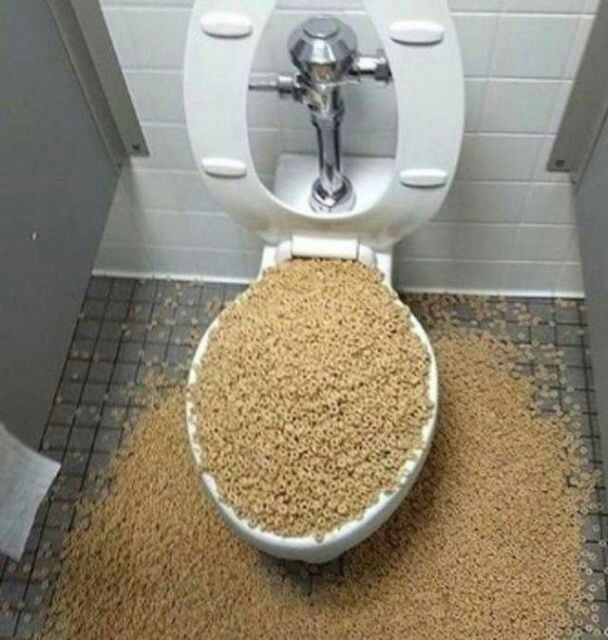Is it Safe to Flush Food in the Toilet?
Is it Safe to Flush Food in the Toilet?
Blog Article
What are your thoughts about Flushing Food Down the Toilet??

Introduction
Many individuals are usually confronted with the dilemma of what to do with food waste, especially when it comes to leftovers or scraps. One common inquiry that emerges is whether it's all right to flush food down the toilet. In this short article, we'll look into the reasons that people may take into consideration purging food, the effects of doing so, and different methods for correct disposal.
Reasons why people might think about purging food
Absence of awareness
Some individuals may not recognize the prospective harm brought on by flushing food down the bathroom. They may erroneously believe that it's a harmless technique.
Ease
Purging food down the bathroom might seem like a quick and very easy solution to taking care of undesirable scraps, particularly when there's no nearby garbage can readily available.
Negligence
In many cases, people may simply pick to flush food out of sheer idleness, without considering the effects of their actions.
Repercussions of flushing food down the bathroom
Ecological effect
Food waste that winds up in rivers can contribute to contamination and harm water ecosystems. In addition, the water made use of to purge food can strain water resources.
Pipes problems
Purging food can bring about clogged pipelines and drains, causing costly plumbing fixings and aggravations.
Kinds of food that need to not be flushed
Coarse foods
Foods with coarse textures such as celery or corn husks can get entangled in pipes and trigger clogs.
Starchy foods
Starchy foods like pasta and rice can soak up water and swell, leading to blockages in pipes.
Oils and fats
Greasy foods like bacon or cooking oils ought to never be flushed down the bathroom as they can strengthen and trigger obstructions.
Appropriate disposal methods for food waste
Utilizing a waste disposal unit
For homes furnished with garbage disposals, food scraps can be ground up and flushed through the pipes system. However, not all foods are suitable for disposal in this way.
Recycling
Particular food product packaging materials can be recycled, minimizing waste and reducing environmental effect.
Composting
Composting is an environment-friendly method to dispose of food waste. Organic products can be composted and made use of to enhance soil for horticulture.
The value of appropriate waste management
Reducing ecological harm
Correct waste administration techniques, such as composting and recycling, help decrease contamination and preserve natural deposits for future generations.
Shielding plumbing systems
By preventing the technique of flushing food down the toilet, home owners can avoid costly plumbing repair services and keep the honesty of their pipes systems.
Final thought
Finally, while it might be appealing to flush food down the bathroom for benefit, it is very important to understand the prospective effects of this action. By taking on correct waste monitoring techniques and taking care of food waste properly, people can add to healthier pipes systems and a cleaner environment for all.
FLUSH FOOD DOWN THE TOILET?
FLUSHING FOOD CAN CAUSE BLOCKED DRAINS IN YOUR HOME
All of the plumbing fixtures in your home are connected to the same sewer pipe outside of your home. This outdoor sewer pipe is responsible for transporting all the wastewater from your home to the Council sewer mains. Even small pieces of food that go down the kitchen sink can cause problems for your sewer. It should therefore be obvious that flushing larger bits of food, such as meat, risks a clog in either the toilet itself or the sewer pipes. Flushing greasy food is even more problematic because oil coagulates when it cools, coating the interior lining of your pipes.
THE TOILET IS NOT A BIN
Food isn’t the only thing that people shouldn’t be flushing down the toilet. People use the toilet to dispose of all kinds of things such as tampons, makeup wipes, dental floss, kitty litter and even underwear. Water goes to great lengths to educate residents about the high costs and stress placed on wastewater treatment systems simply from people flushing the wrong stuff down the toilet. It costs taxpayers millions of dollars each year, and homeowners thousands in blocked drain repairs.
FLUSHING FOOD IS A WASTE OF WATER
Flushing food is a waste of our most precious resource - water. In June this year Level 1 water restrictions were introduced to protect water supply from drought conditions. Much of New South Wales continues to be affected by prolonged drought with recent figures revealing up to 97 per cent of the state remains in drought. Depending on whether you have a single or dual flush toilet, every single flush uses between five and 11 litres of water. In the current climate this is a huge amount of water to be wasting on flushing food that should be placed in the bin (or better yet, the compost).
https://www.jabplumbingsolutions.com.au/blog/can-you-flush-food-down-the-toilet

We had been made aware of that article about through a pal on a different web blog. Appreciated our content? Please quickly share it. Let others check it out. Thank-you for your time spent reading it.
Contact Report this page